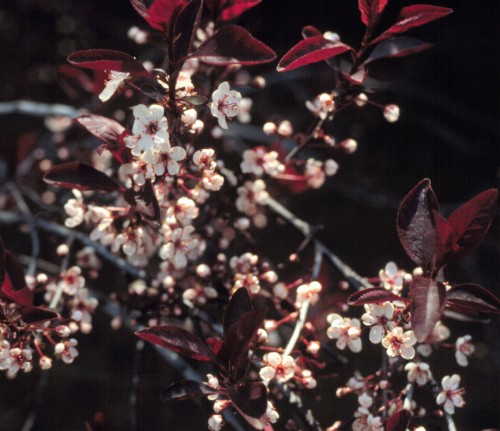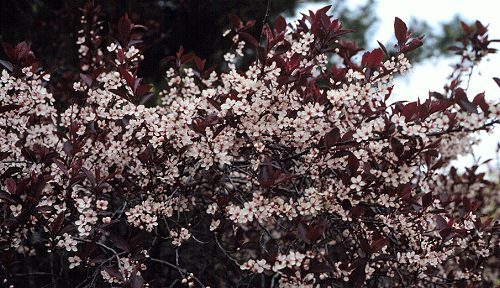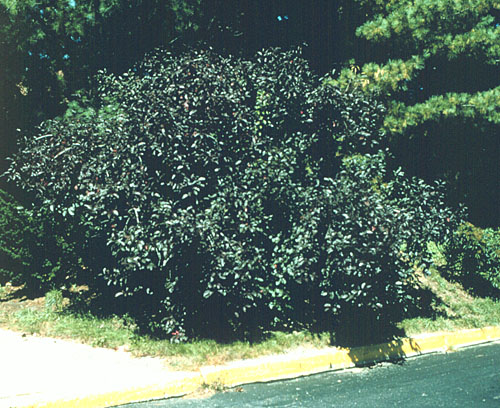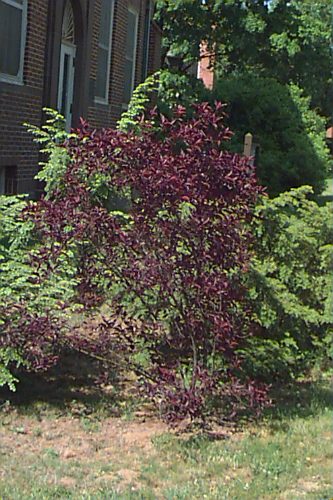Prunus x cistena
Purpleleaf Sand Cherry
Rosaceae
ExpandHabitat
- hybrid between P. pumila and P. cerasifera 'Autropurpurea'
- hardy in zone 4, and warmer parts of 3
Habit and Form
- a small deciduous tree
- 7' to 10' tall
- no more than 5' wide
- fine texture
- fast growth rate
Summer Foliage
- simple, deciduous leaves
- alternate leaf arrangement
- foliage has a reddish-purple color
- leaves have a serrated leaf margin
- thick leathery texture
- approx. 2" long
- elliptical leaf shape
- high quality foliage
Autumn Foliage
- leaves remain red
Flowers
- single flowers
- pink-purple in color
- flowers are fragrant
- flowers emerge after leaf set in spring
- blooms in May
- attractive
Fruit
- blackish purple fruit
Bark
- reddish brown bark
Culture
- full sun
- easily transplanted from bare root, B&B, or containers
- soil adaptable
- prefers a well-drained soil
- prune after flowering in spring
Landscape Use
- specimen
- patio plant
- small groupings
- for flowering effect
- for purple foliage
- foundation plant
Liabilities
- short-lived
- many insect and disease problems
ID Features
- a deciduous small tree
- alternate leaf arrangement
- reddish-purple, high quality foliage
- simple, elliptic, serrated leaves
- single, pink flowers
- fragrant flowers
- blackish, purple fruit
Propagation
- by softwood cuttings
Cultivars/Varieties
'Big Cis' - This selection is notable for its more vigorous growth, as the plant grows larger to form a small rounded tree to 14' tall. The purple leaves are also larger, but the flowers are as per the species.
'Minnesota Red' (also known as 'Minnesota Purpleleaf') - Selected for its deeper purple leaves, this cultivar maintains the color well into fall. It is a good choice in cold climates, where the number of purple-leaved plants is limited.




